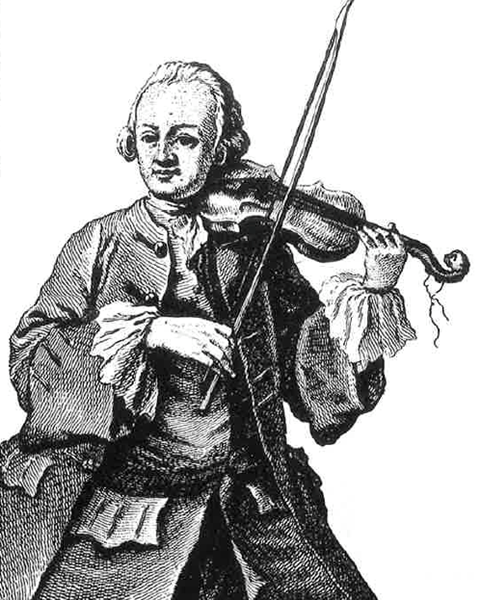Tips from The Strad’s archive on the use of vibrato, bow strokes and rhythmic hierarchy

A Baroque bow tells you how to play, because this music was written for one. If I try to play Bach with a modern bow now, it’s very hard – almost unplayable.
My advice to students now is to try and play with a Baroque bow and to learn from it – and you should also listen with an open mind to good musicians and period-instrument groups and how they play this music.
Viktoria Mullova, Lessons in Time Travel, The Strad, July 2013
Geminiani considered vibrato (‘close shake’) to be an ornament. He associated it with affective performance, which may express majesty and dignity as well as affliction and fear.
His recommendation to use vibrato ‘as often as possible’, not least because it can make the sounds of short notes ‘more agreeable’, is contrary to the sparing use advocated by his contemporaries and has been interpreted by many as cart blanche for the adoption of a ‘modern’ continuous vibrato.
Robin Stowell, Francesco Geminiani: Lessons from the Master, The Strad, September 2012
There’s often a misunderstanding in Baroque music that it should be played without vibrato. But that’s only half the truth. Leopold Mozart writes that vibrato is like a tremolo, and he compares it to a church bell – if you hit a bell, there’s a clear sound at the beginning, then shortly afterwards you have an oscillation, a ringing, which is basically a kind of vibrato. He says that you should try and translate this natural effect on to your instrument.
Claudio Bohórquez, Lessons in Time Travel, The Strad, July 2013
The quintessence of Baroque style is hierarchy, with some notes taking more importance according to certain rules – for example first beat stronger than resolution, with notes grouped and graded like syllables in a word.
The omnipotent rule of down bow reflects the importance of hierarchy, organising strong beats to be played with a down bow, assuming that the up bow is the weaker. The coveted equalisation of down- and up-bow strokes which developed later is inappropriate when administering Baroque bowings and articulation, regardless of which bow is being used.
Pauline Nobes, The Strad, September 2003
I think it’s a real pity that so many musicians all over the world put themselves at the front, and in fact stand between the composer and the audience. I often feel that the music suffers, that the composer is put in the shadows by the glamour of the performance. Ironically, I think there are increasing numbers of early music performers who have that same attitude, and I do regret that.
Sigiswald Kuijken, Baroque Benelux: an Early Wake Up, The Strad, June 2011
Bach creates an artful fusion of dance and music. The composer’s intention must have been to create the illusion of dance through music. If a cellist today aspires to create an imaginary dance performance in the listener’s mind, they will also have to give Bach’s rhythms subtle inflections to create the feeling of a dance’s movement and momentum.
These inflections have to be delicately nuanced, so that they rhythms conjure the image of dance without obvious distortions. They need to be so subtle as to be all but imperceptible, in the same way that Viennese musicians accompany a waltz: the inflections are barely noticeable, but they beautifully evoke that dance in the listener’s imagination.
Ulrich Heinen, Invitation to the Dance, The Strad, August 2011
Try to reflect the quality of the harmony in the sound. If it is more dissonant and dramatic, the bow should go where the sound is more intense – closer to the bridge and deeper into the string. When it’s a release harmony, it should be lighter, with more length and less pressure.
Jean-Guihen Queyras, Masterclass - Bach Cello Suite no.5, Prélude, The Strad, June 2012
There is a huge discrepancy between, for example, the wonderfully imaginative bass lines of J.S. Bach and the duller offerings of other composers, but the bass line of any piece has the potential to greatly influence the energy of the whole ensemble. Most important in this respect is articulation. The use of a short, articulated bow stroke helps to clarify the texture of Baroque music and brings it to life by highlighting its dance-like qualities.
Daniel Yeadon, The Strad, June 2000











































No comments yet